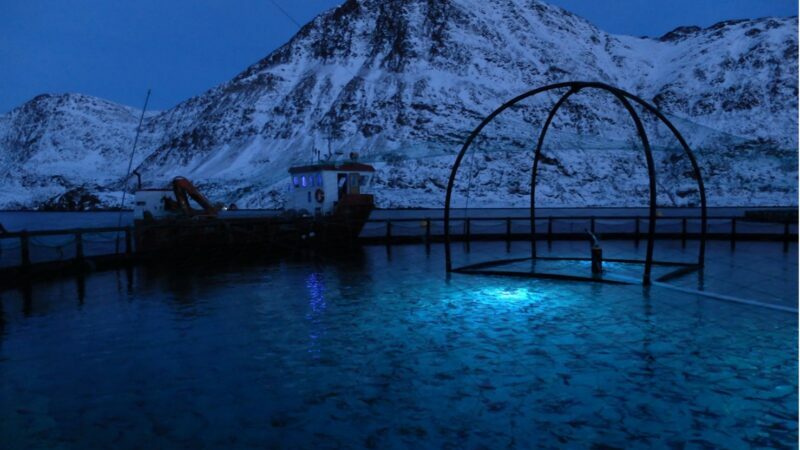As the demand for healthy and sustainable food grows, producers must turn to innovative lighting as a way of future-proofing agricultural systems.
These methods are effective, clean, and easy to adopt, and will help to return acres of land back to the environment once lost to traditional farming techniques.
Fortunately, revolutionising food production is a cornerstone of the European Green Deal which aims to make sure that everyone on the continent has access to ‘healthy, affordable, and sustainable food’.
“The coronavirus crisis has shown how vulnerable we all are, and how important it is to restore the balance between human activity and nature,” said Frans Timmermans, Executive Vice-President of the European Commission. “At the heart of the Green Deal the Biodiversity and Farm to Fork strategies point to a new and better balance of nature, food systems and biodiversity; to protect our people’s health and well-being.”
In particular, the pandemic has exposed our reliance on, and fragility of, large agricultural production lines which revolve around exploitative, intensive and inefficient methods in fish and animal farming.
“According to the UN, nearly 90% of the world’s marine fish stocks are now fully exploited, overexploited or depleted: there is need for sensible policies to conserve fish stocks combined with responsible fish farming,” said Bill Bien, Leader of Signify’s Agricultural Lighting business.
The company, formerly Philips Lighting, has been at the forefront in pioneering science-based solutions for aquacultural lighting, as well as the lighting systems for greenhouses and indoor vertical farming.
“With our LED lighting we help customers to improve the efficiency of sea-based salmon farms, enhance feed conversion rates, reduce food costs and lower risk of infection,” said Bien.
Fish depend on light to determine the time and seasons, and this assists with converting food and overall growth. But in larger and deeper pens, as well as rougher seas in the open water, light often fails to pierce the surface.
But with Signify’s seacage and hatchery lighting range, up to 100,000 lumens of LED’s are evenly distributed throughout the water column, specifically targeting dark spots and simulating the biological rhythms of the fish. The spread of deeper lights promotes the animals to swim down, avoiding surface-living sea lice larvae and converting food more effectively, which reduces marine pollution and increases animal welfare.
The lighting used in salmon farming is equally relevant to the EU’s sea bream/sea bass industry. The latter, which is centred in the Mediterranean Sea – in particular Greece, Italy and Spain – stands to benefit from this technology as demand for these types of fish soars. According to market research firm IMARC, the global market for sea bream and sea bass grew at a compound annual growth rate of around 5% from 2015-2020.
If fish is ultimately going to remain on the menu for the foreseeable future – and it looks likely – then practices like this are crucial, while sustainable fish farming needs to greatly expand overall.
“With the world population expected to increase to 10 billion people by 2050, we expect demand for fish-based protein to skyrocket,” said Remco Lansbergen, General Manager for Signify Aquaculture solutions.
“Fish grown in aquaculture facilities can offer an important contribution to fulfil that need, and we in turn are happy that our LED lights and systems can help in improving the wellbeing of the fish, while also resulting in better growth and lower costs for fish farmers,” he added.
Signify has made a number of advancements within the industry having recently been chosen as the main provider of underwater LEDs for Australis Seafoods and joining forces with ScaleAQ in a global strategic partnership. The company is also making strides in providing lighting for land-based fisheries.
Reducing the distance from farm to fork
Now, Signify is calling for post-pandemic stimulus packages, both in Europe and outside of the bloc, to support lighting innovations, not only in aquaculture, but in the larger market for horticultural lighting and vertical farming. Signify already argued that the latter was a healthy ingredient for sustainable food production in 2020. Vertical indoor farming, made possible by optimised light recipes for example, uses less water, eliminates the need for pesticides, and lowers food miles.
“The adoption of digital technology in aquaculture and farming overall supports the common goals of many governmental stimulus programs to reduce carbon emissions and increase biodiversity by taking the pressure off natural resources,” said Harry Verhaar, Head of Signify’s Public and Government Affairs.
“Policymakers have a golden opportunity to stimulate investment in agribusiness and reduce the distance from farm to fork. If we are smart about how we use our resources, we can help feed the planet and support biodiversity. These should not be mutually exclusive but complementary goals.”
The Dutch have proven that the marriage between intensive farming and technology works.
The Netherlands is the second largest exporter of agricultural products in the world after the United States – a country with 270 times its landmass. How did it do it? Verhaar mentions his company’s involvement in this David and Goliath story of two exporters: “If you fly into Amsterdam at night, you will see a faint glow from acres of greenhouses below, there’s the clue. It’s about innovation and technology.”
This post was sponsored by Signify. See our editorial guidelines for what this means.
